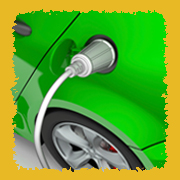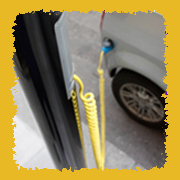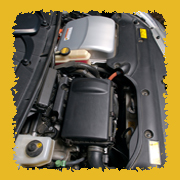Tell Me More Electrical Safety-SMART! Home
Electric Vehicles
Electric vehicle (EV) technologies have grown a lot since 1999 when the first hybrid EV was introduced. Today, a variety of all-electric EVs and hybrid gasoline/electric EVs are available, and industry experts anticipate there will be over a million EVs on the roads this decade. EVs are popular for many reasons:
- They help reduce pollution.
- They cost less to run than gasoline vehicles.
- They help reduce our dependency on gasoline.
Battery Electric Vehicles
Battery EVs run entirely on electrical energy. Instead of a fuel tank, batteries store the electricity that is used to operate the vehicle. These batteries can be recharged by plugging the vehicle into a special high-voltage charging station or standard 120-volt or 240-volt household outlets. It takes anywhere from 2 to about 20 hours to recharge the battery, depending on the vehicle’s charger and the voltage used. The batteries store the electricity until the vehicle is driven.
Early types of battery EVs included golf carts, scooters, and other vehicles used for short trips at low speeds. With rapid industry growth this decade, battery EVs can accommodate both city and highway driving needs. Smaller models designed for urban use can travel 30-75 mph and go 50-85 miles on a charge. The high-end Tesla can reach speeds of 150 mph and travel more than 300 miles on a single charge.
Under the hood, a battery EV consists of an electric motor, one or more controllers, and batteries. The controller governs the amount of electricity that flows from the batteries to the motor when the driver steps on the accelerator. The motor changes electrical energy from the batteries to mechanical energy, which makes the vehicle move.
Driving a battery EV down the road produces no pollution at all. Even when pollution related to power plant electricity production is factored in, these EVs produce less pollution than gasoline- or diesel-powered vehicles. Battery EVs are also more efficient than gasoline or diesel vehicles, if you compare the energy used in creating gasoline at a refinery to producing electricity in a power plant.
When a battery EV is stopped in traffic, it doesn't have to use fuel to keep the motor running like a gasoline engine does. Added efficiency is created by something called "regenerative braking." When the vehicle slows down, the motor continues to turn, but the power no longer flows to the wheels. Instead, the power is fed back to the batteries, giving them a small charge every time the driver stops or goes downhill.
Hybrid Electric Vehicles
A hybrid electric vehicle (HEV) uses two or more power sources. Most HEVs run on both a gasoline engine and an electric motor. They are similar in size and comfort level to the most popular gasoline-powered vehicles. There are now over 60 models of HEVs on the market, with the Toyota Prius remaining the top-selling HEV since its introduction in 2000.
The major components of an HEV include a gasoline engine, an electric motor, a transmission, and, in some models, a generator. A fuel tank stores gasoline for the engine, and a battery pack stores electricity for the motor. The battery is charged by the gasoline engine and by the electric motor or generator during normal operation. Regenerative braking charges the batteries slightly when the car slows down, recovering some of the energy.
Plug-In Hybrid Electric Vehicles
Another type of hybrid electric vehicle is the plug-in hybrid, or PHEV. These vehicles have two power systems, an internal combustion engine and a battery. Unlike the regular hybrids such as the Toyota Prius, the PHEV's battery can be recharged either by the gas engine or by plugging the vehicle into an external source of electricity. Some PHEVs are known as extended-range electric vehicles, or EREVs, because their secondary power source provides enough fuel to allow the vehicle to drive for hundreds of miles when the batteries become low.
All types of hybrid EVs use smaller, more efficient gasoline engines than conventional gasoline or diesel vehicles. They also burn less fuel than conventional vehicles, thus producing fewer pollutants and releasing less carbon dioxide into the air.









